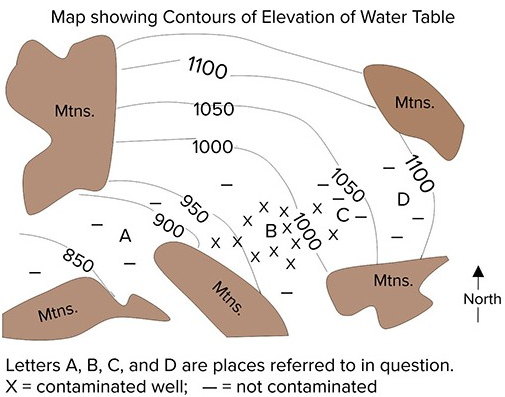Many of the world's large rivers flow from one state or province to another, or even through several others. The Colorado River and Mississippi River are examples of this. In many instances, they flow from one country to another
Discuss the potential problems that arise from this simple geographical fact. For example, what potential problem arises if the irrigation water used in Nebraska was polluted or contaminated as the water moved through South Dakota?
What will be an ideal response
States, provinces or even countries downstream may suffer the consequences of too many diversions upstream, or pollution that originates upstream. This situation could lead to lawsuits between states in a single nation, or legal battles or even wars between nations. The Middle East, for example, is an area where significant conflicts over water sharing is expected to increase.
You might also like to view...
This map shows contours of the water table, the location of four factories (labeled A, B, C, and D), and contaminated and uncontaminated wells. Which way will the contamination flow?

A) Northeast, up the contours
B) Southwest, down the contours
C) Northwest and southeast, parallel to the contours
D) Impossible to tell because the movement of contamination is independent of groundwater
What is regolith?
A) a large continuous occurrence of rock B) rock that is from a particular bedding layer C) rock from the layer closest to the surface D) rock that is weathered and loose
Near the equator, the patterns of convection currents are called ________
A) Coriolis cells B) the troposphere C) high-pressure cells D) El Niño events E) Hadley cells
The NFPA recommends color-coding hydrants to indicate _______.
a. the water source b. the most recent flow test c. available flow d. available pressure